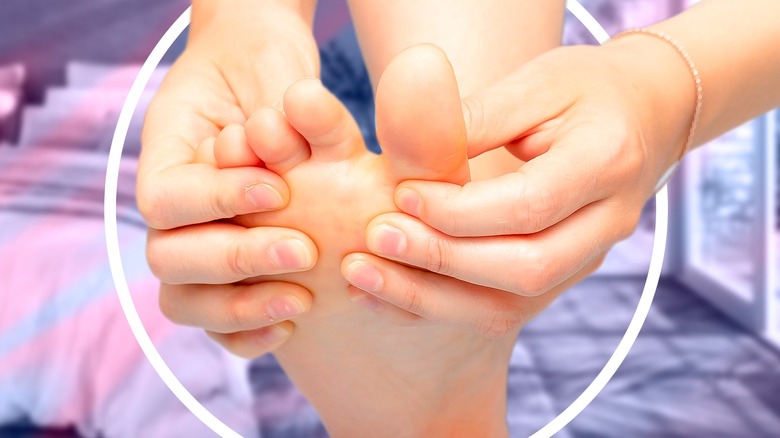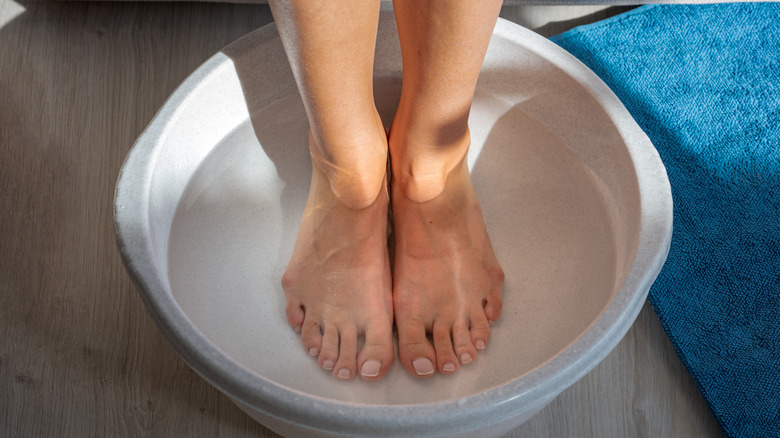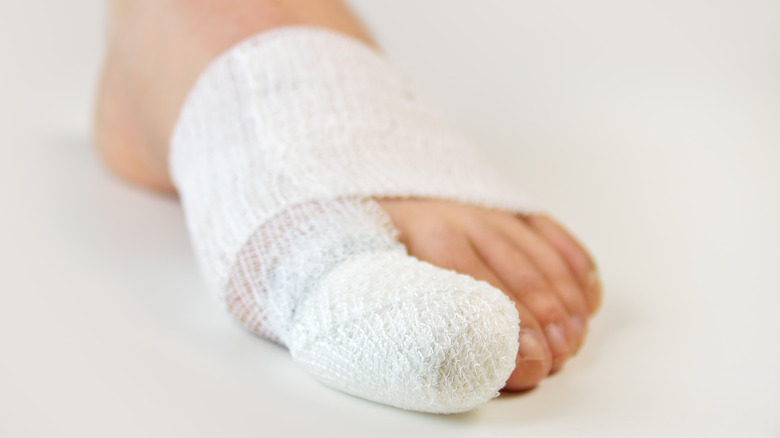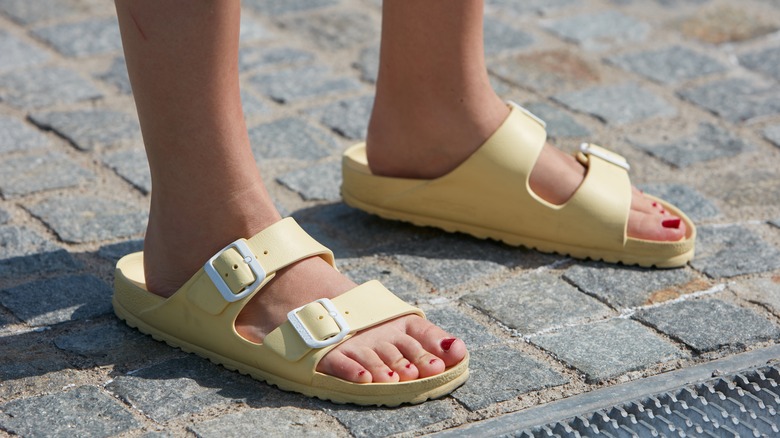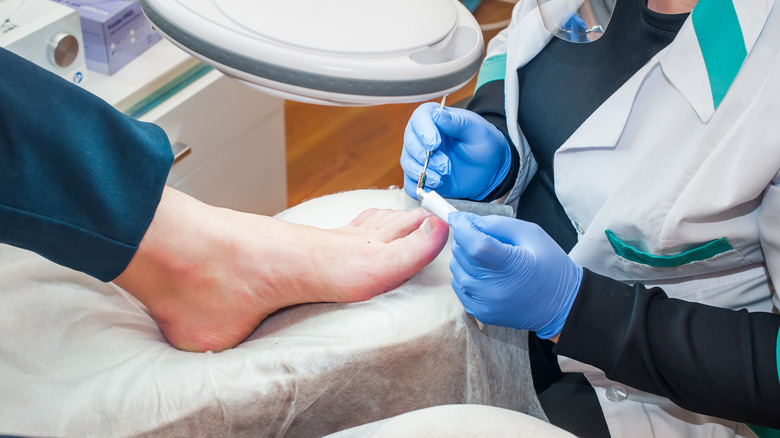Tips For Treating An Ingrown Toenail At Home
If you've ever dealt with painful, annoying ingrown toenails, you're not alone. Ingrown toenails account for 20% of reported foot problems at the doctor, per Informed Health. Being on your feet frequently, you may not even realize you have one until it starts causing you pain. According to experts at the American Academy of Orthopedic Surgeons, an ingrown toenail occurs when the corner of the nail begins to grow into your skin. This can occur on one or both sides of the nail. Ingrown nails are often caused by improper trimming — cutting them too short or not trimming the nails straight across. Stubbing your toe and wearing too-tight shoes can cause ingrown nails as well.
The first signs of an ingrown toenail include swelling, tenderness, and pain, per Healthline. When left untreated, it can become red and infected. You might notice blood or pus draining from the area, and the skin may overgrow around the toe. To prevent infection altogether, there are a few things experts suggest doing to treat the ingrown nail at home and prevent new ones from growing. But if it continues to get worse, it's best to seek medical attention to take care of the issue.
Soak the nail daily
Soaking the area in warm water every day is one method to relieve painful symptoms and allow the toenail to grow properly. You can do this three to four times daily for about 20 minutes at a time until you see improvement, per Mayo Clinic. Board-certified dermatologist Brendan Camp, M.D., tells Byrdie, "Consider soaking the affected nail in a combination of white vinegar and water, as white vinegar has antibacterial properties."
Experts at Healthline recommend soaking in Epsom salt for added relief or castile soap, which is non-toxic and milder than most soaps. Soaking in warm water daily may help to soften the nail and relieve some of the tension. You can soak in the bathtub or use a large bucket or basin to place your feet in while sitting down. Just remember to dry your feet off completely before applying any creams or ointments. An additional plus — there are several other benefits to soaking your feet besides treating your ingrown nails, from stress relief to soft skin.
Apply antibacterial ointments
"Ingrown toenails are prone to bacterial infections, and using an ointment can prevent and treat such infections," dermatologist Brendan Camp, M.D., explains to Byrdie. Bacitracin, Neosporin, and Bactroban are all popular antibacterial ointment options. Apply the ointment according to the instructions on the package, and put a bandage on the toe to protect the area. If you notice any rash or reaction to the topical treatment, don't continue to use it.
You may have also heard of placing cotton or dental floss under the affected nail to lift it up and out of the skin. This is meant to help the nail grow properly. Some medical groups disagree with this practice; for instance, the American College of Foot and Ankle Surgeons argues that this will only increase pain and allow bacteria to enter the area, leading to further infection. Experts at Healthline suggest soaking the cotton or floss in alcohol to eliminate bacteria and lower the risk of infection.
Wear comfortable shoes
Along with improper trimming, tightly fitted shoes are another common culprit when it comes to ingrown toenails, per Informed Health. Tight shoes often cramp the toes, placing pressure on them and not allowing the nails to grow properly. When treating ingrown toenails, be sure to wear comfortable shoes that give your toes enough room to breathe. Proper footwear can aid in the healing process and prevent more ingrown nails in the future.
Whenever you're out of the house, it's important to wear breathable shoes that allow you to wiggle your toes around. You don't want to squeeze your sore foot into a pair of tight-fitting heels for a night out. This can make the ingrown toenail worse. While you're at home, it's best to be barefoot or wear socks that aren't too tight around your toes. A pair of loose-fitting slippers or sandals can also work if you prefer to protect your feet around the house.
Seek medical attention if you notice signs of infection
As dermatologist Kseniya Kobets tells Byrdie, "Ingrown toenails do not always go away on their own, depending on the severity." If you notice the ingrown toenail early enough, home remedies may be enough to alleviate symptoms and prevent infections. But if it begins affecting your daily life, making it difficult to walk or put pressure on your feet, your toe may require medical attention.
If you notice the ingrown toenail has only gotten worse after treating it at home, with increased redness, swelling, and pain, there may be an infection. Blood or pus oozing from the area is another clear indicator of infection. According to the American Academy of Orthopedic Surgeons, a physician may need to surgically remove part of the ingrown nail and some of the connected tissue. Don't worry — the toe is numbed for this procedure. Talk to an expert if you're concerned about your ingrown toenail. Our nails can tell us a lot about our health, so it's best not to ignore any issues that arise.
